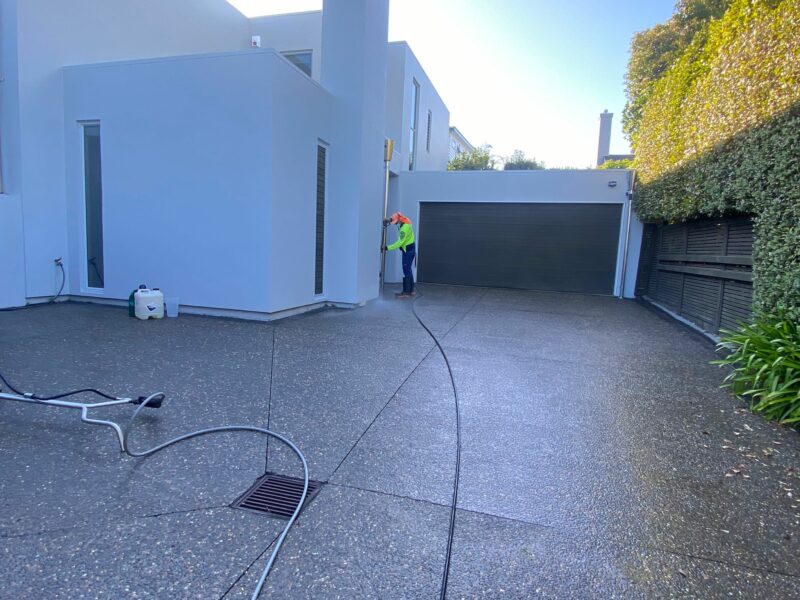In the quest for efficient and eco-friendly cleaning solutions, high-pressure water blasting has emerged as a powerful contender. From industrial facilities to residential spaces, this method offers a range of benefits that make it an attractive choice for tackling tough cleaning tasks. In this article, we delve into the intricacies of high-pressure water blasting, exploring its applications, advantages, and considerations.
Understanding High-Pressure Water Blasting
High-pressure water blasting, also known as hydro-blasting or water jetting, involves the use of pressurized water to remove unwanted materials, coatings, or contaminants from surfaces. The equipment typically consists of a high-pressure pump that generates water pressures ranging from 5,000 to 40,000 pounds per square inch (psi), depending on the application. This immense pressure, combined with specialized nozzles, creates a focused stream of water capable of cutting through grime, rust, paint, and more.
Applications Across Industries
Industrial Cleaning:
High-pressure water blasting finds extensive use in industrial cleaning operations. It effectively removes scale, rust, coatings, and deposits from equipment, tanks, pipes, and machinery without the need for harsh chemicals or abrasive materials. Industries such as manufacturing, petrochemical, and food processing benefit from its ability to maintain equipment integrity while achieving thorough cleanliness.
Surface Preparation:
In surface preparation applications, high-pressure water blasting serves as a versatile method for priming surfaces before painting, coating, or repair work. It efficiently eliminates contaminants, oils, and residues, ensuring optimal adhesion and surface quality. Shipyards, bridge maintenance crews, and construction sites commonly utilize this technique to prepare surfaces for subsequent treatments.
Concrete Restoration:
For concrete surfaces plagued by graffiti, stains, or deterioration, high-pressure water blasting offers an effective restoration solution. It can remove layers of accumulated grime, revealing the underlying surface without causing damage. Concrete contractors and property maintenance teams leverage this method to revitalize sidewalks, parking garages, and building exteriors.
Advantages of High-Pressure Water Blasting
Environmentally Friendly:
One of the most significant advantages of high-pressure water blasting is its eco-friendliness. Unlike traditional cleaning methods that rely on chemical solvents or abrasive materials, water blasting minimizes environmental impact by using water as the primary cleaning agent. It reduces the release of harmful pollutants into the air and waterways, aligning with sustainable cleaning practices.
Versatility:
High-pressure water blasting is remarkably versatile, capable of addressing a wide range of cleaning challenges across various surfaces and materials. Whether it’s removing paint from metal, cleaning delicate machinery, or restoring concrete surfaces, this method adapts to diverse cleaning requirements without causing damage.
Cost-Effectiveness:
While the initial investment in high-pressure water blasting equipment may seem significant, its long-term cost-effectiveness becomes evident over time. By eliminating the need for chemical cleaners, abrasive materials, and labor-intensive manual cleaning methods, businesses can reduce operational costs and improve productivity. Additionally, the efficiency of water blasting often translates to shorter cleaning cycles and minimal downtime.
Safety:
Compared to abrasive blasting techniques that generate airborne particles and pose health risks to operators, high-pressure water blasting offers a safer alternative. It minimizes exposure to hazardous chemicals and reduces the likelihood of accidents associated with abrasive materials. Furthermore, the precision of water blasting reduces the risk of surface damage and minimizes the potential for collateral damage to surrounding areas.
Considerations and Best Practices
Proper Equipment Selection:
Choosing the right high-pressure water blasting equipment is crucial for achieving optimal results. Factors such as water pressure, flow rate, nozzle type, and pump capacity should be carefully considered based on the specific cleaning application and surface characteristics.
Operator Training:
Proper training is essential for operators to safely and effectively utilize high-pressure water blasting equipment. Training programs should cover equipment operation, safety protocols, and maintenance procedures to ensure optimal performance and mitigate risks.
Surface Assessment:
Before initiating the cleaning process, conducting a thorough assessment of the target surface is critical. Factors such as surface material, condition, and integrity influence the selection of appropriate pressure levels, nozzles, and cleaning techniques to prevent damage and achieve desired results.
Environmental Compliance:
While high-pressure water blasting is inherently more environmentally friendly than many alternative methods, it’s essential to adhere to environmental regulations and guidelines. Proper wastewater containment and disposal practices should be implemented to prevent contamination and minimize ecological impact.
Conclusion
High-pressure water blasting stands out as a highly effective, eco-friendly, and versatile cleaning method with applications spanning various industries and surfaces. Its ability to remove contaminants, prepare surfaces, and restore materials makes it a valuable asset for businesses seeking efficient and sustainable cleaning solutions. By embracing high-pressure water blasting techniques and adhering to best practices, organizations can achieve superior cleaning results while minimizing environmental impact and enhancing operational efficiency.


